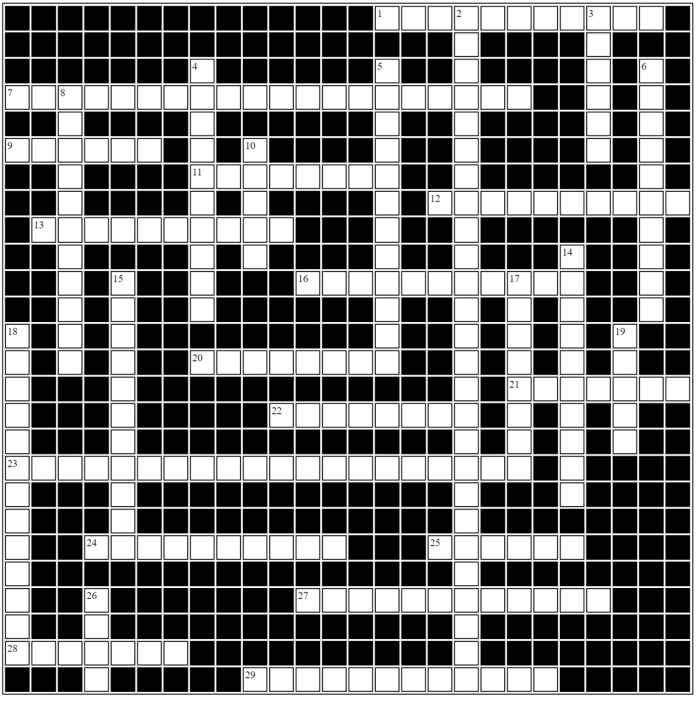Across
1. Disease of the retina.
7. Location of cells of the pancreas which produce and secret insulin.
9. Type of diabetes usually diagnosed in older people who are often overweight or obese. Characterized by insulin resistance and may have reduced amounts of insulin produced by the pancreas.
11. Frequent urination.
12. _________ diabetes has no determinable cause.
13. Damage to the nervous system.
16. Extreme potassium depletion in the circulating blood.
20. Endocrine gland responsible for the production of insulin
21. A hormone which assists the entry of blood glucose into the cells.
22. Condition caused by excess bilirubin in the blood.
23. __________ diabetes: carbohydrate intolerance of variable severity with onset or first recognition during preganancy.
24. Another name for metabolic syndrome.
25. An intermediate product of fat metabolism.
27. After a meal.
28. A type of ketone found in the blood and urine in diabetes. Has a characteristic fruity smell.
29. Abnormally low blood calcium.
Down
2. Metabolic stage between normal glucose homeostasis and overt diabetes.
3. Type of diabetes usually diagnosed in the young, the pancreas cannot produce enough insulin.
4. Increased hunger.
5. The accumulation of ketones in the blood.
6. Increased thirst.
8. Formation of fat.
10. Islet cells of pancreas that synthesize glucagons.
14. Unusually large size.
15. Disease of the kidneys.
17. Diabetes _________: A disease characterized by a high level of glucose in the blood.
18. High blood sugar.
19. cells that synthesize somatostatin.
26.Islet cells that synthesize insulin.
https://oknursingtimes.com/jobs/job/director-of-nursing/












